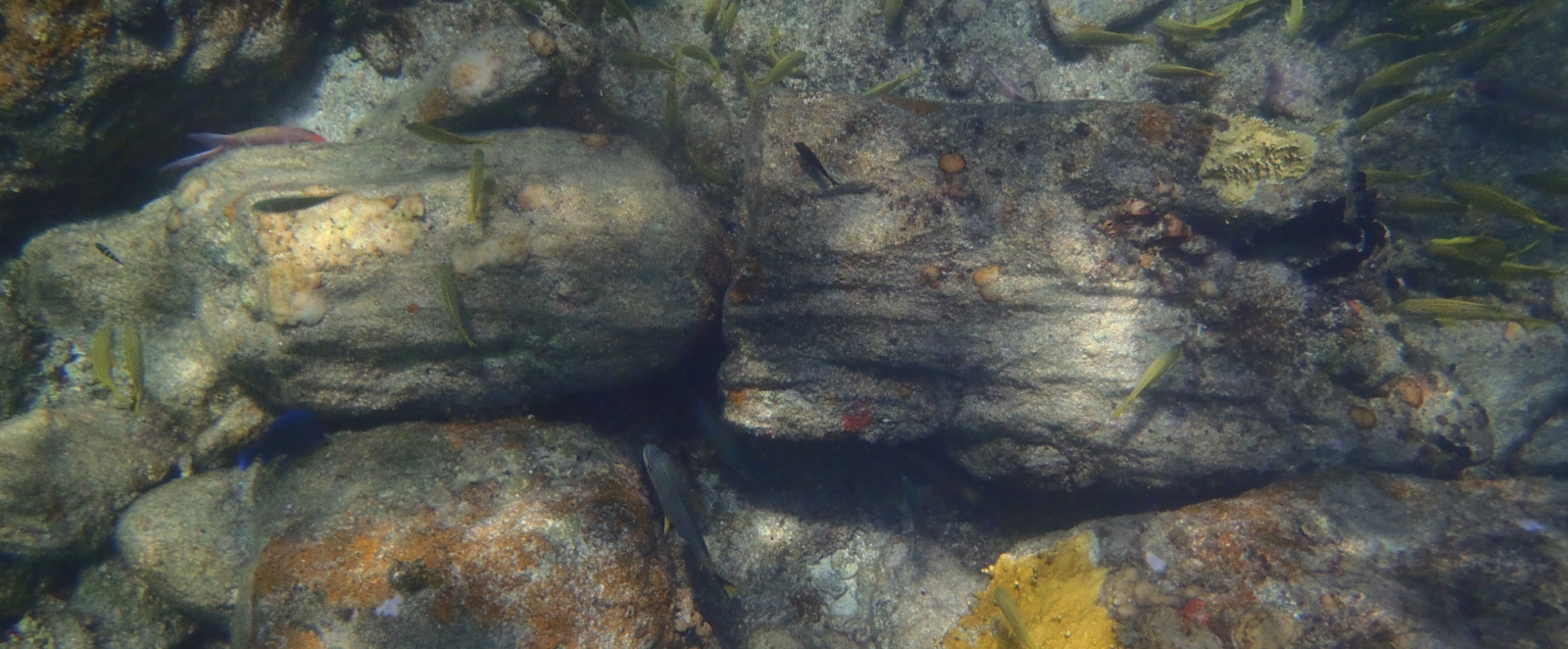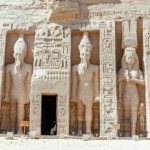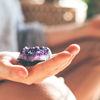“Get to your computer, we are sending you some pictures you have GOT to see!” It was our long-time Bahamian research colleagues Eslie & Krista Brown calling from their home in Bimini. My husband, Greg, and I were in the midst of preparing for the start of another long, planned expedition of the some of the most remote portions of the Great Bahamas Bank. We would be seeing the Browns in person in less than two days. So we were more than a little puzzled as to why they were bothering to send pictures through the on-again-off-again, slow-as-molasses Bimini digital cable.
In addition, their voices were full of an uncharacteristic level of excitement as they told us they had just taken these pictures at one of their favorite fishing spots. On this day, the water had been especially calm and clear. As they looked down from the boat, suddenly, for the first time in all of their visits to the site, they realized that the sea floor below them was littered with a massive pile of huge rocks. Diving down to get a better look, they found stones that appeared to have been deliberately cut by the hand of man. Some even resembled pieces of building pillars! Right then and there, they decided to name their amazing discovery Brown’s Ruins—and deservedly so. While many other researchers had likely passed over that very site, it was the Browns’ sharp eye that brought it to the attention of those of us interested in finding evidence for Edgar Cayce’s Atlantis.
We watched on our side of the computer as the first picture began to form oh so slowly, line-by-line. And sure enough, as promised, before our eyes appeared a 2 foot by 3 foot, barrel-shaped stone with the unmistakable straight-line indentations used on columns in ancient times and called fluting. They weren’t exaggerating. This was unlike anything we had come across in our nine years and over two dozen expeditions by air, sea, and land throughout Bimini, Andros, and the Great Bahamas Bank. And it was exactly what we had been hoping to find.
Our expeditions began in 2003, with the successful exploration of a well known, but mysteriously elusive, large underwater circular formation. It had been spotted and photographed from the air off the southwestern coast of Andros Island by two pilots in 1968. After much effort that year, we were able to locate it, but discovered that instead of a ring of stones placed by some ancient civilization, it was instead a natural circle of sponge growth. However, during this first effort, we became aware of other strange formations visible from the air and thus began our methodical search for possible ancient building remains within the Great Bahamas Bank. Having been with us on most all of those searches, the Browns, local dive operators, had come to understand what we were looking for so were more than a little elated to bring this new and unexpected discovery to our attention.
We visited the site during that 2011 expedition and afterwards, taking underwater video and still shots of the amazing variety of stone shapes that made up what we realized was a huge tear-shaped rock heap measuring approximately 160 feet by 500 feet and rising another 6 to 7 feet off the sea floor. Our explorations were very challenging given that the site can only be safely dived on for 90 minutes every 12 hours due to the extremely heavy tidal currents. In my excitement to explore the site, on the first dive I tried to stay a bit longer than 90 minutes and barely had enough strength to fight the current as I swam back to the boat. We also took samples of some of the stones for geological identification. The results deepened our belief that this site may represent the first definitive evidence for a pre-ice age civilization in the Bahamas as described in the Edgar Cayce readings.
So after so many years of exploring the Bimini Road and its nearby underwater structures, as well as the Andros Platform and hundreds of odd formations identified from the air over the Great Bahamas Bank, we are convinced that Brown’s Ruins is something special. If you want to know more, I will be presenting our findings on Brown’s Ruins in more detail at the A.R.E.’s 2017 Ancient Mysteries Conference October 5-8 in Virginia Beach. Be among the first to see pictures and video of this amazing discovery!
Feature image courtesy of Lora Little via Eslie & Krista Brown, who took this close up of the site, as described above.







